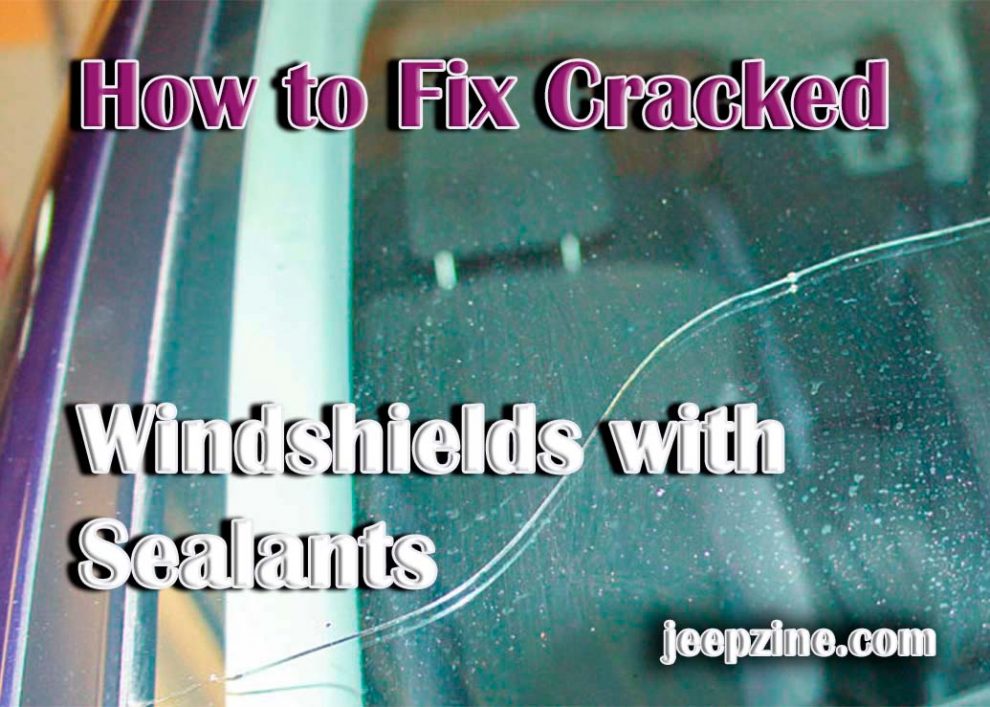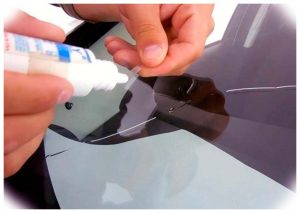Having a cracked windshield is not only an eyesore but can also reduce visibility while driving and make your car unsafe. The good news is that you can repair most cracks in your windshield without having to replace it. Sealant is one of the most efficient ways to repair a crack in your windshield. In this article, we will discuss what types of sealants are suitable for repairing a cracked windshield as well as how to use them for maximum results.
 What Causes Cracks in Windshields?
What Causes Cracks in Windshields?
Windshields can become cracked for a variety of reasons. Debris from the road, such as stones, gravel, and other objects, can cause small chips or cracks in your windshield when they hit it at high speeds. Another common cause is sudden temperature changes that make the glass expand or contract. In some cases, a windshield can also crack if it experiences severe impact due to an accident.
Benefits of Using Sealant for Windshield Repair
Sealants are popular among DIYers because they are easy to use and provide excellent results when applied correctly. Furthermore, sealants are much cheaper than replacing an entire windshield, making them a great option when you need quick repairs on a budget. Additionally, using sealant takes very little time compared to other methods, such as patching kits or vacuum suction cups which require hours of drying time.
Types of Sealants Suitable for Windshield Repair
When it comes to repairing a cracked windshield with sealant, you can use two main types: polyurethane sealants and acrylic sealants. Each type has its own unique features and benefits.
-
Polyurethane Sealants: Polyurethane sealants are highly flexible, making them ideal for repairing cracks that move or expand due to extreme temperatures. Furthermore, polyurethane sealants offer strong adhesion and durability, making them a great option for long-term repairs.
-
Acrylic Sealants: Acrylic sealants are also highly flexible but are best used for short-term repairs as they lack durability compared to polyurethane sealants. Acrylic sealant is less expensive than polyurethane but still provides excellent adhesion and crack-filling capabilities.
Step-by-Step Guide To Repairing a Cracked Windshield With Sealant
Now that you know the different types of windshield repair sealant available, let’s discuss how to apply them correctly to get the best results possible. Here is a step-by-step guide on how to repair a cracked windshield with sealant:
-
Preparation Steps: Before applying the sealant, thoroughly clean the affected area of your windshield. This will ensure that the sealant adheres properly and produces better results. You can use a glass cleaner or rubbing alcohol to remove any dirt and debris from the crack.
-
Applying The Sealant: Once you have prepared the area, you can start filling in the crack with sealant. Depending on which type of sealant you are using, polyurethane or acrylic, follow their respective application instructions carefully as outlined on their packaging labels. For example, polyurethane must be applied in multiple coats, whereas acrylic requires only one coat. Make sure to leave enough time for each sealant layer to dry before proceeding with the next layer if using polyurethane.
-
Finishing Up: After all layers have been applied and allowed time for drying, it’s time for finishing up. Use a razor blade or fine-grit sandpaper to smooth out any bumps or uneven surfaces, for it blends in seamlessly with your windshield’s surface. Then apply a few drops of water-based lubricating solution onto a soft cloth and wipe away any smudges or smears. Allow the area to dry completely before driving.
Conclusion
In conclusion, repairing a cracked windshield with sealant is a great way to make your car look new. Following this step-by-step guide, you can quickly and easily repair your cracked windshield with either polyurethane or acrylic sealants. Just make sure to always read the instructions on the packaging labels before applying any type of sealant for maximum results.


 What Causes Cracks in Windshields?
What Causes Cracks in Windshields? Applying The Sealant: Once you have prepared the area, you can start filling in the crack with sealant. Depending on which type of sealant you are using, polyurethane or acrylic, follow their respective application instructions carefully as outlined on their packaging labels. For example, polyurethane must be applied in multiple coats, whereas acrylic requires only one coat. Make sure to leave enough time for each sealant layer to dry before proceeding with the next layer if using polyurethane.
Applying The Sealant: Once you have prepared the area, you can start filling in the crack with sealant. Depending on which type of sealant you are using, polyurethane or acrylic, follow their respective application instructions carefully as outlined on their packaging labels. For example, polyurethane must be applied in multiple coats, whereas acrylic requires only one coat. Make sure to leave enough time for each sealant layer to dry before proceeding with the next layer if using polyurethane.
Add Comment